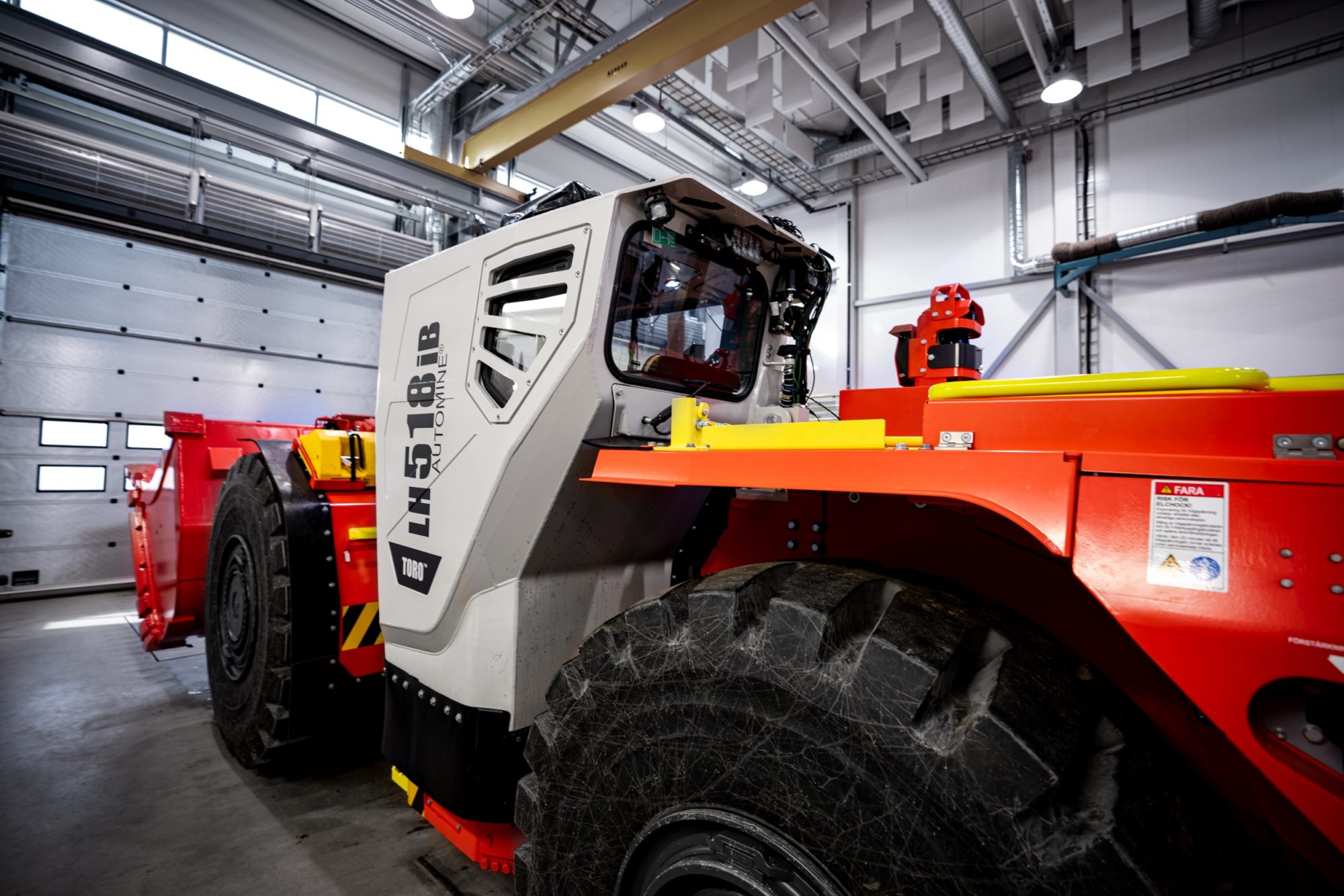Sandvik Mining and Rock Solutions has been one of the key facilitators of mining’s electrification and automation transition underground, establishing a core offering of battery-electric equipment that leverages Artisan™ battery packs and electric drivelines, plus a wide offering of cable tethered machines, for the former; and the continued rollout of the renowned AutoMine® automation platform for the latter.
The company is now embarking on its next evolution with the integration of the two, which will soon culminate in the launch of the LH518iB – the AutoMine-ready version of the 18-t-payload LH518B.
Integrating electrification and automation is nothing new for Sandvik; the company has been providing AutoMine functionality on cable tethered loaders for over 10 years.
Automating a machine that operates off battery power only is a different proposition.
Although the battery swap process on the LH518iB can’t yet be fully automated, one operator can run the entire cycle from a surface chair, including tele-remote battery swapping. Human involvement underground is only required for connecting and disconnecting batteries from chargers.
“The LH518iB will be the first battery machine that will be automated, compatible with our AutoMine Lite and AutoMine Fleet offering solution as well as our Manual Production Monitoring system,” Ty Osborne, Product Line Manager Underground Automation at Sandvik Mining and Rock Solutions, told IM.
AutoMine Lite is an automation system for a single Sandvik loader or truck and a more advanced alternative for AutoMine Tele-Remote, while AutoMine Fleet – as the name would suggest – is an advanced automation system for a fleet of Sandvik underground loaders and trucks sharing the same automated production area.
Having delivered AutoMine automation systems since 2004 and accumulated a footprint of about 800 automated and connected units, the automation of Sandvik’s growing battery-electric fleet was always on the cards, according to Osborne, predating the launches of the AutoMine Concept Underground Drill – in 2022 – and the AutoMine Concept Loader – in 2020 – both of which are fully autonomous and battery-electric.
The changes involved with automating the battery-electric LH518iB mainly relate to “industrialising” the machine for autonomous capabilities and switching over to the iSeries platform for the added intelligence, Osborne said.
Sandvik already has mine sites lined up for field trials of this machine in North America and northern Europe. This is on top of a planned deployment of six LH518iBs over 2023-2024 in South Australia.
Operators of these machines will benefit from either being able to carry out the battery swap from within the cab or from a remote operating station, Osborne confirmed.
“However, at this stage, there still is a requirement for a person to connect the charging cable and cooling cables,” he said.
“In the future, this will be automated as we are constantly pushing the boundaries further and pioneering new technologies in the mining industry.”
Alongside this, Sandvik is working on battery management systems to enable operators and supervisors to see what level of charge the on-board battery has and the expected time to full charge of spare batteries to enable critical decision-making around when to swap the on-board battery.
The benefits that come with these types of datasets will enable these newly automated battery-electric machines to become potentially the most productive loaders on the market, according to David Hallett, Vice President, Automation at Sandvik Mining and Rock Solutions.
“Automation and electrification go hand-in-hand,” he said. “The experience we are getting with the battery-electric equipment in the field shows that the performance of those automated machines versus those powered by diesel is already at a higher level.
“Going from drive lines to direct drive onto the wheel ends with battery-electric machines gives us a greater capability to control the equipment compared with what we had in the past. This should allow us to improve the automation of the equipment going forward.”
Bucket filling, as an example, should benefit from the integration of electrification and automation, with the two technologies allowing greater accuracy and consistency of bucket fill times and levels over the diesel-automated equivalent. The improved motion control of the machine from a hydraulics perspective is also another area Hallett highlighted.
He concluded: “These types of improvements are important and tangible benefits to highlight to customers from both an equipment performance perspective and the ability to carry out more remote operations.”











